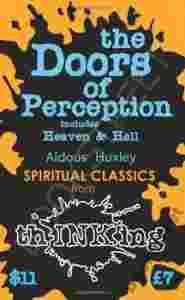|
In 1952 Aldous Huxley became involved in the now
legendary experiment to clinically detail the
physiological and psycho-logical effects of the little
known drug used by Mexican and Native American elders in
religious practices. The drug was Peyote-now commonly
know as mescalin. By the standards of the time, Huxley
was a hard working, respected, and reserved intellectual
from a highly intelligent, well-know, and eccentric
British family. By any standards, the results of the
experiment were remarkable. The Doors of Perception and
Heaven and Hell detail the practic-alities of the
experiment and give Huxley's vivid account of his
im-mediate experience and the more prolonged effect upon
his sub-sequent thinking and awareness. At first, the
reader is drawn in by the sheer naivety and tom-foolery
of the proposal but is soon caught in a finely woven net
by the juxtaposition of Huxley's formidable intellect,
his remarkable ability to convey the experience in such
acute and truthful detail, and his incredible modesty.
In 1922 Gertrude Stein famously wrote - A rose is a rose
is a rose. In proving her right, Huxley also shows the
deeper meaning be-hind the apparently simple verse and
goes on to deliver such spec-tacular accounts of the
most everyday objects that the reason for their repeated
and continual renderings by all the major artists
throughout history suddenly becomes quite clear. For the
con-scious and willing reader - a trip to the
Guggenheim, the Louvre or the Tate Modern will never be
the same again. |
|

